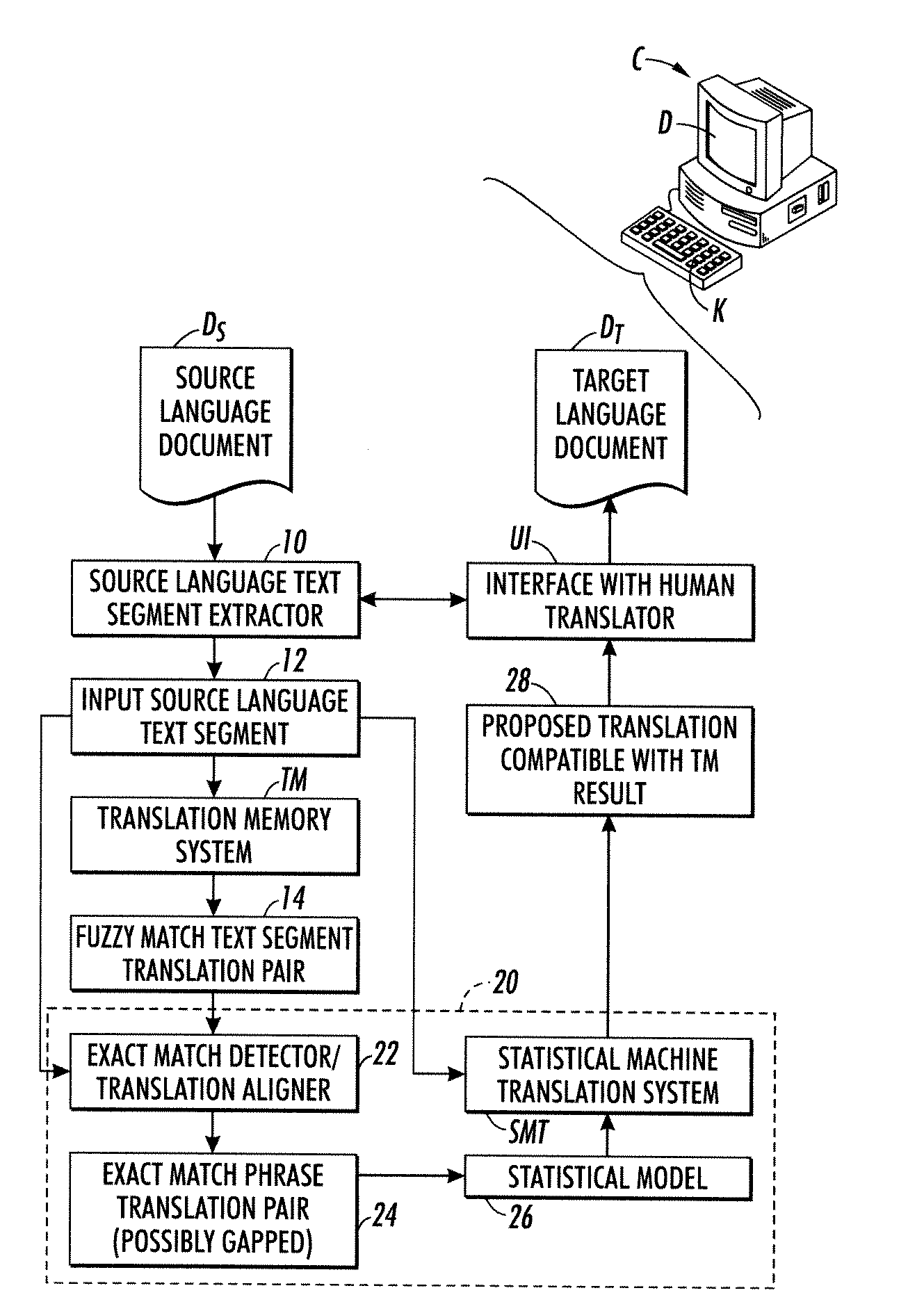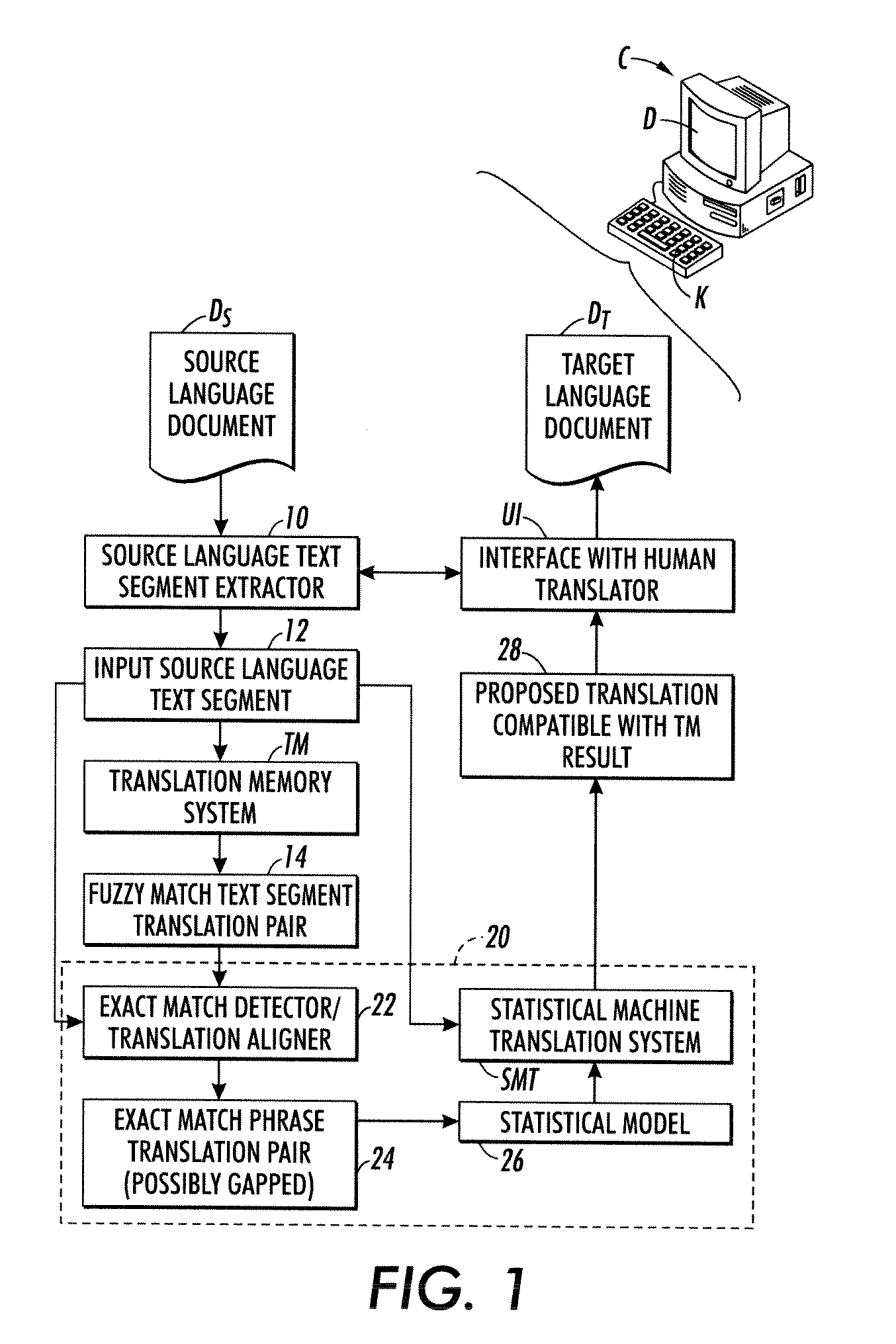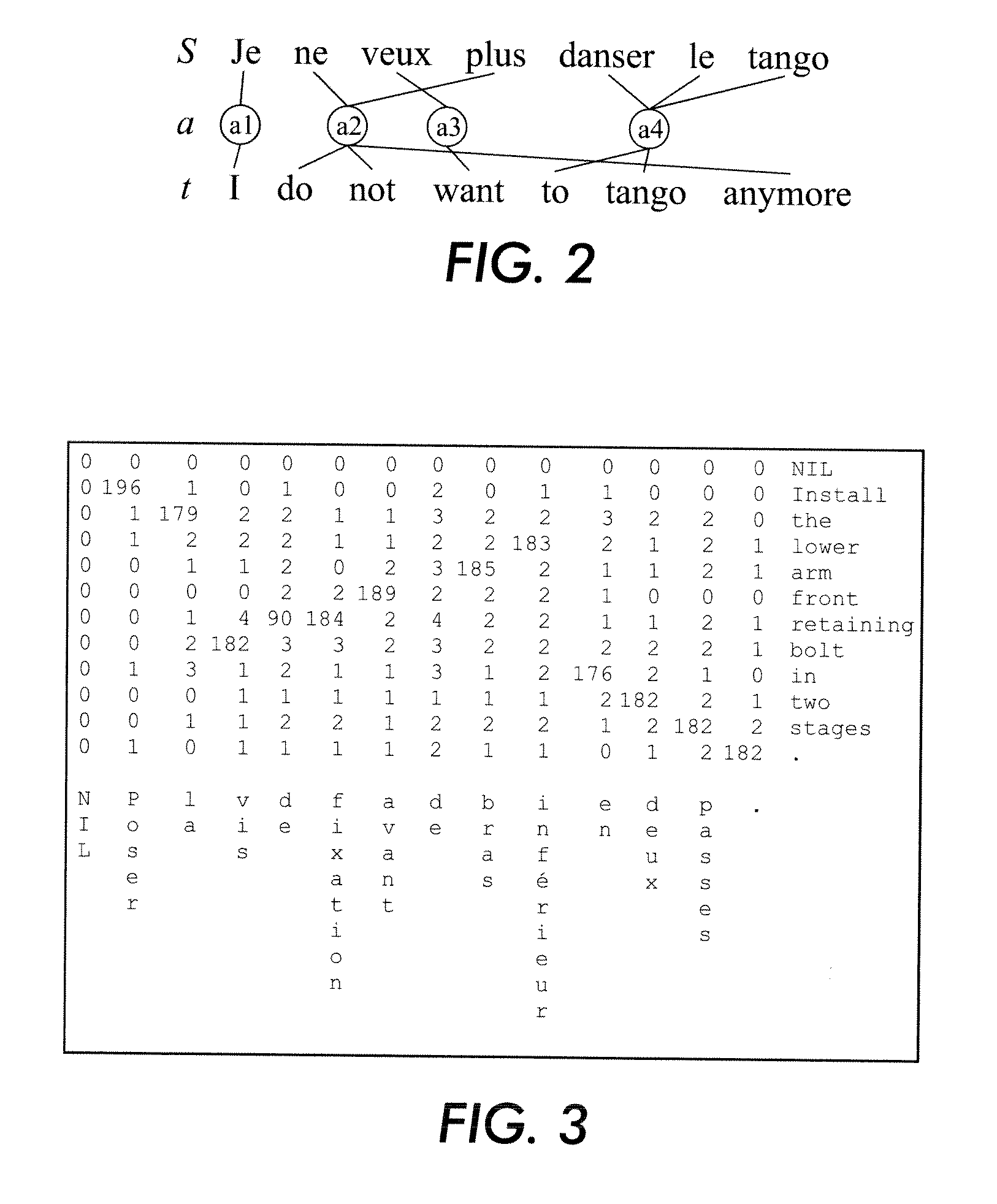Dynamic translation memory using statistical machine translation
a statistical machine translation and dynamic technology, applied in the field of information processing arts, natural language translation arts, document processing and storage arts, can solve the problems of difficult to construct machine translation systems operating on first principles, infrequent exact matches, and tediously manual approaches, and achieve high statistical probability.
- Summary
- Abstract
- Description
- Claims
- Application Information
AI Technical Summary
Benefits of technology
Problems solved by technology
Method used
Image
Examples
Embodiment Construction
[0017]With reference to FIG. 1, a document DS written in a source language is being translated to generate a corresponding translated document DT written in a target language that is different from the source language. The term “document” as used herein is intended to encompass any textual block, unit, collection, corpora, or so forth, and is not limited to a single text file, word processing document file, or other logical unit. The source and target languages may in general be any two natural languages, such as English, German, French, Russian, Chinese, or so forth. In the case of an alphabetic language such as English, German, French, or Russian, a “word” of the language is an ordered sequence of letters or, in some instances, digits, that represent a vocabulary word, a numerical quantity, or the like. In the case of a language such as Chinese, a “word” of the language is a symbol or group of symbols that correspond to a word of an alphabetic language.
[0018]As used herein, the te...
PUM
 Login to View More
Login to View More Abstract
Description
Claims
Application Information
 Login to View More
Login to View More - R&D
- Intellectual Property
- Life Sciences
- Materials
- Tech Scout
- Unparalleled Data Quality
- Higher Quality Content
- 60% Fewer Hallucinations
Browse by: Latest US Patents, China's latest patents, Technical Efficacy Thesaurus, Application Domain, Technology Topic, Popular Technical Reports.
© 2025 PatSnap. All rights reserved.Legal|Privacy policy|Modern Slavery Act Transparency Statement|Sitemap|About US| Contact US: help@patsnap.com



